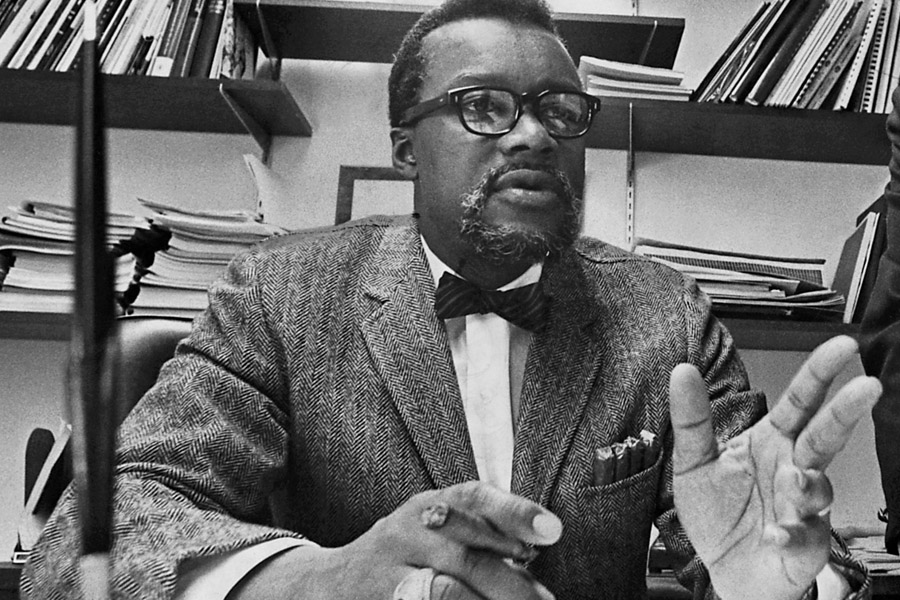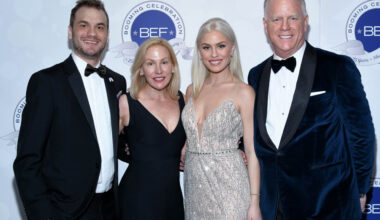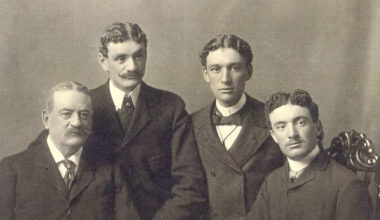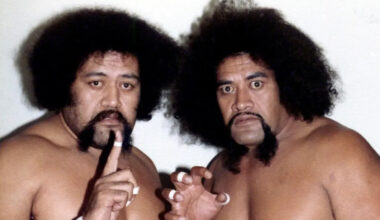Basic Information
| Field | Details |
|---|---|
| Full Name | Cyril Degrasse Tyson |
| Birth | 1927, New York City |
| Death | December 29, 2016 |
| Professions | Sociologist, educator, civil-rights and urban-policy leader |
| Known For | Leadership of HARYOU/HARYOU-ACT; senior roles in New York City government during the 1960s |
| Education | B.A., St. Francis College (Brooklyn); graduate degree in social service, Columbia University |
| Key 1960s Roles | Project/Executive Director, HARYOU/HARYOU-ACT; senior administrator in the NYC Commission on Human Rights and Human Resources Administration |
| Spouse | Sunchita (Toni) Feliciano Tyson (m. 1952) |
| Children | Neil deGrasse Tyson; Stephen Joseph Tyson; Lynn Antipas Tyson |
| Family Origins | Parents emigrated from the Caribbean (St. Kitts/Nevis) |
| Archival Legacy | Personal papers held in a major public archive in New York City |
Early Life and Education
Cyril Degrasse Tyson was born in 1927 in New York City, the son of Caribbean immigrants with roots in St. Kitts and Nevis. He grew up in Harlem and the Bronx, absorbing a city that was bursting with sound, struggle, and invention. Those early vistas—street-corner debates, crowded classrooms, a working city forever in motion—formed the canvas for a life devoted to public service.
He studied at St. Francis College in Brooklyn, earning a bachelor’s degree before moving on to Columbia University for graduate training in social service. At Columbia he sharpened a skill that would define his career: transforming human stories into data-driven policy and turning data back into programs that met people where they stood.
Building HARYOU and a New Urban Imagination
In the early 1960s, Harlem Youth Opportunities Unlimited—HARYOU—became a proving ground for a new approach to urban change. Cyril stepped into leadership there as project director and later as executive director after HARYOU merged with ACT (Associated Community Teams), forming HARYOU-ACT. The organization focused on education reform, youth employment, and community development at the height of the War on Poverty.
HARYOU’s signature work was both analytical and practical: research like “Youth in the Ghetto” mapped the topography of disadvantage in granular detail; programs in schools and neighborhoods tested interventions in real time. In this space, Cyril’s style stood out—he blended sociological rigor with the cadence of a neighborhood organizer, moving comfortably between a boardroom’s whiteboard and a community meeting’s folding chairs.
HARYOU became a conduit through which federal and city resources flowed into Harlem, energizing projects that built skills, improved schooling, and created jobs. The work was contested, as any public enterprise of the era was, but it reset the expectations for what local institutions could do when given tools and trust.
City Hall and Human Rights
By the mid-to-late 1960s, Cyril had taken on senior responsibilities inside New York City government. He served in the Commission on Human Rights and later in the Human Resources Administration, including leadership roles that touched community relations, manpower development, and anti-poverty strategy under Mayor John V. Lindsay.
These were the years when cities were laboratories. New York tested policies meant to widen opportunity, reduce discrimination, and modernize public services. Cyril’s portfolio placed him in the swirl of that experimentation—designing programs, negotiating among agency chiefs, and translating grassroots insight into official policy. The work demanded a cool head and a long memory; he showed both, guiding teams through budget shifts, political crosswinds, and the daily urgency of serving the city’s most vulnerable residents.
Scholarship, Reports, and Civic Leadership
Alongside his administrative leadership, Cyril authored and edited reports and monographs on youth development, urban policy, and community action. His pages were clear-eyed and unsentimental, grounded in observation and data. He understood that public programs must be legible—to neighborhoods, to funders, to policymakers—and his writing helped them travel.
His civic footprint extended beyond New York City. He held leadership roles with community organizations, including a period of executive responsibility in Newark, and participated in national policy forums. As a founding member of One Hundred Black Men of New York, he joined peers in building a platform for mentorship, leadership, and civic advancement—another bridge between neighborhoods and institutions. His papers, preserved in a major New York archive, document not just his career but the evolution of urban policy as a field.
Family: The People Around Cyril
Cyril’s life radiated through family—part of the reason his public legacy still feels personal.
- Sunchita (Toni) Feliciano Tyson: Married in 1952, she built a career in public health and gerontology, a steady counterpart to Cyril’s public life. Their partnership was equal parts warmth and mission.
- Neil deGrasse Tyson: Their son became an astrophysicist and science communicator, translating the cosmos for millions. Neil’s tributes to his parents emphasize how a household rich in curiosity and discipline—a lab of the mind—set him on his path.
- Stephen Joseph Tyson: An artist whose painter’s eye mirrors the family’s habit of close observation, Stephen carried the creative thread forward.
- Lynn Antipas Tyson: A business professional with a reputation for discipline and clarity, Lynn underscores the family’s range—public service, science, art, and corporate leadership.
- Grandchildren: Through Neil’s children, Travis and Miranda, the family story continues, a new generation raised with the mix of wonder and pragmatism that marked Cyril’s approach to life.
Family Snapshot
| Person | Relationship | Notable Focus |
|---|---|---|
| Sunchita (Toni) Feliciano Tyson | Spouse | Public health and gerontology |
| Neil deGrasse Tyson | Son | Astrophysicist; science communication |
| Stephen Joseph Tyson | Son | Visual artist |
| Lynn Antipas Tyson | Daughter | Business leadership |
| Travis and Miranda | Grandchildren | Education and emerging careers |
Timeline: Milestones and Context
| Year | Event |
|---|---|
| 1927 | Born in New York City to parents from St. Kitts/Nevis |
| 1952 | Married Sunchita (Toni) Feliciano |
| Early 1960s | Project leadership at HARYOU in Harlem |
| 1964 | Major research and program planning tied to “Youth in the Ghetto” and related initiatives |
| 1964–1965 | HARYOU merges with ACT to form HARYOU-ACT; Cyril advances to executive leadership |
| Mid–Late 1960s | Senior roles in NYC government: Commission on Human Rights and Human Resources Administration |
| 1970s–1990s | Continued civic, policy, and organizational leadership; authorship of reports and monographs |
| 2016 | Passed away on December 29, leaving an archival record and broad civic legacy |
How He Worked: Method, Mindset, Impact
Cyril Degrasse Tyson worked like an engineer of social systems—testing hypotheses, tuning programs, measuring results. He listened, then counted; he counted, then acted. In a decade when America argued about whether cities could be saved, he showed that institutions could be made to serve if they learned from the street as much as from the statute.
His influence runs through three channels. First, the programs he built and guided, which improved schools, opened job paths, and professionalized community action. Second, the documents he wrote and the archives he left, which give scholars and practitioners a map of what was tried and why. Third, the family he raised, whose pursuits span science, art, health, and business—a testament to opportunity as a family habit rather than a single event.
FAQ
Who was Cyril Degrasse Tyson?
He was a New York City sociologist, educator, and public administrator who led HARYOU/HARYOU-ACT and held senior roles in city government in the 1960s.
What was HARYOU?
Harlem Youth Opportunities Unlimited was a 1960s initiative focused on education, employment, and community development in Harlem; Cyril served as project and later executive director.
What did he study?
He earned a bachelor’s degree from St. Francis College and a graduate degree in social service from Columbia University.
What roles did he hold in NYC government?
He served in leadership capacities within the Commission on Human Rights and the Human Resources Administration, shaping anti-poverty and manpower programs.
Who was his spouse?
He married Sunchita (Toni) Feliciano Tyson in 1952; she worked in public health and gerontology.
Who are his children?
He had three children: Neil deGrasse Tyson, Stephen Joseph Tyson, and Lynn Antipas Tyson.
Did he publish work?
Yes—he authored and edited reports and monographs on urban policy, youth development, and community action programs.
When did he pass away?
He died on December 29, 2016.



